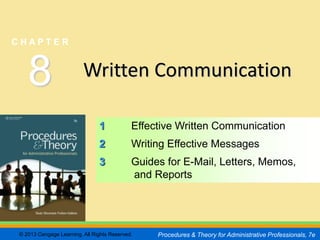This document discusses effective written communication. It outlines the "C" characteristics of complete, clear, correct, concise, courteous and considerate communication. Guidelines are provided for writing emails, letters, memos and reports, including determining the goal and audience, organizing content, and following appropriate formatting conventions for each document type. Effective editing techniques are also discussed.
























